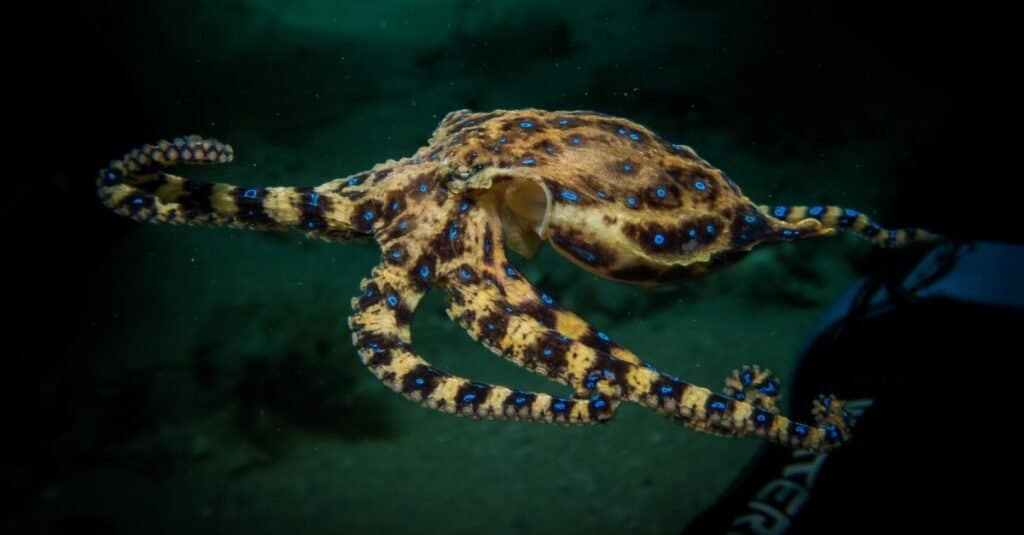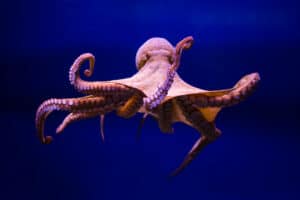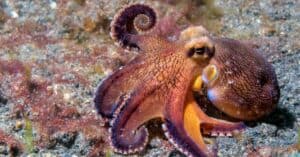The Cirroteuthidae is a family of cirrate octopuses with an other-worldly appearance. This very special clip shows one making its way across the ocean floor. Its body billows like a fluorescent ghost. Even though the clip is speeded up, it shows how unreal this sea creature is!
Watch the Amazing Creature Now
What Exactly Is an Octopus?
The octopus is not a single species; there are at least 300 different species. They are a cephalopod mollusk that lives in the ocean. There is quite a lot of variety amongst the different species regarding size, color, and exact body shape. Some are up to 30 feet across, while others are just an inch. They all have a saccular body and eight arms. Octopuses can contract their arms which have two rows of fleshy suckers. They also have complex eyes positioned on the top of their head. Many of them can change their color for camouflage and communication.
The word octopus comes from the Ancient Greek word for eight, ‘okto,’ and for the foot, ‘pous.’ Some well-known species are the giant Pacific octopus and the blue-ringed octopus.
What Do Octopuses Normally Eat?
Octopuses are carnivores – they live by eating other creatures. Most species focus on catching crabs or other crustaceans, including lobsters. Others eat plankton, worms, and fish.
It’s difficult to kill and eat a crab as their hard shell protects them! Many species of octopuses, however, have found a way around this. They inject their prey with venomous saliva, which may be done through the eye stalk! It paralyzes the prey so that it stops struggling. Some species drill through their shell, and others flip the crab over to get to the softer belly.
Are Octopuses Dangerous to Humans?

Blue-ringed octopus swimming in the open ocean.
©Iman Daniel/Shutterstock.com
Octopuses do not set out to attack humans but will defend themselves if they feel threatened. Even though they do not have teeth, they can still bite. They have sharp beaks made from chitin. It is rare to get bitten by an octopus, but it can happen. Also, their saliva contains toxins. One notable example was reported in 2019. A woman put an octopus on her face to pose for a photograph, but it bit her. It was very painful, and I bled for some time!
Finally, some blue-ringed octopus produce a deadly venom that is 1,200 times more toxic than cyanide. These guys are certainly best avoided!
The photo featured at the top of this post is © Shpatak/Shutterstock.com
Thank you for reading! Have some feedback for us? Contact the AZ Animals editorial team.







